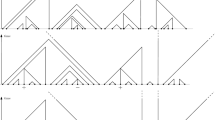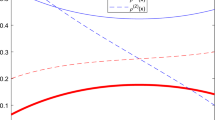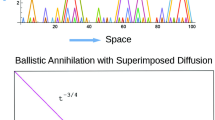Abstract
We present a systematic analytical and numerical study of the annihilation catastrophe phenomenon which develops in an open system, where species A and B diffuse from the bulk of restricted medium and die on its surface (desorb) by the reaction A + B → 0. This phenomenon arises in the diffusion-controlled limit as a result of self-organizing explosive growth (drop) of the surface concentrations of, respectively, slow and fast particles (concentration explosion) and manifests itself in the form of an abrupt singular jump of the desorption flux relaxation rate. In the recent work [B.M. Shipilevsky, Phys. Rev. E 76, 031126 (2007)] a closed scaling theory of catastrophe development has been given for the asymptotic limit when the characteristic time scale of explosion becomes much less than the characteristic time scales of diffusion of slow and fast particles at an arbitrary ratio of their diffusivities 0 < p < 1. In this paper we consider the behavior of the system at strong difference of species diffusivities p ≪ 1 and reveal a rich general pattern of catastrophe development for an arbitrary ratio of the characteristic time scales of explosion and fast particle diffusion. As striking results we find remarkable scaling properties of catastrophe evolution at the crossover between two limiting regimes with radically different dynamics.
Similar content being viewed by others
References
P.L. Krapivsky, E. Ben-Naim, S. Redner, A Kinetic View of Statistical Physics (Cambridge University Press, Cambridge, 2010)
D. ben-Avraham, S. Havlin, Diffusion and Reactions in Fractals and Disordered Systems (Cambridge University Press, Cambridge, 2000)
B. Chopard, M. Droz, Cellular Automata Modeling of Physical Systems (Cambridge University Press, Cambridge, 1998)
E. Kotomin, V. Kuzovkov, Modern Aspects of Diffusion Controlled Reactions: Cooperative Phenomena in Bimolecular Processes (Elsevier, Amsterdam, 1996)
B.M. Shipilevsky, Phys. Rev. Lett. 73, 201 (1994)
B.M. Shipilevsky, Phys. Rev. Lett. 82, 4348 (1999)
B.M. Shipilevsky, Phys. Rev. E 76, 031126 (2007)
B.M. Shipilevsky, J. Phys.: Condens. Matter 19, 065106 (2007)
B. O’Shaughnessy, D. Vavylonis, Phys. Rev. Lett. 84, 3193 (2000)
J. Crank, The mathematics of diffusion (Clarendon Press, Oxford, 1975)
G.D. Smith, Numerical solution of partial differential equations with exercises and worked solutions (Oxford University Press, London, 1965)
B.M. Shipilevsky, J. Phys. A 30, L471 (1997)
E.V. Albano, Reaction Kinetics in Fractals, in Mathematics of Complexity and Dynamical Systems, edited by R. Meyers (Springer, New York, 2011)
Author information
Authors and Affiliations
Corresponding author
Rights and permissions
About this article
Cite this article
Shipilevsky, B. Catastrophe in diffusion-controlled annihilation dynamics: general scaling properties. Eur. Phys. J. B 88, 302 (2015). https://doi.org/10.1140/epjb/e2015-60386-8
Received:
Revised:
Published:
DOI: https://doi.org/10.1140/epjb/e2015-60386-8




